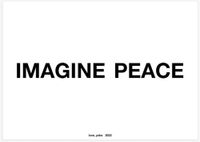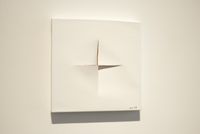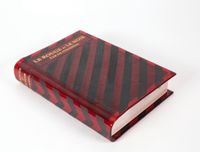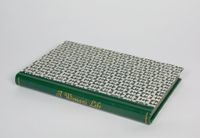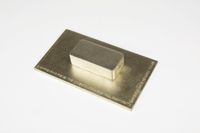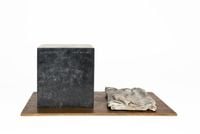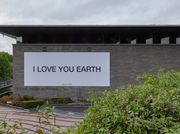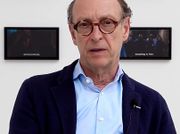Yoko Ono is a pioneer of the 1960s movements of Conceptual and Performance art, and a musician and an activist.
Read MoreOno was born in Tokyo in 1933 and moved to New York with her family in the early 1950s. She enrolled at Sarah Lawrence College to study writing and music, but never graduated. Nevertheless, she found her niche in the underground New York art scene, where in 1960 she became known for hosting avantgarde events with composers Richard Maxfield and La Monte Young in her Manhattan loft.
Ono's performances of the time often called for audience participation, a trait that would continue throughout her career. Lighting Piece (1955), for example, is a piece of written text that instructs participants to 'Light a match and watch till it goes out,' while Painting to Be Stepped On (1960–1961) told them to trample a blank canvas.
Ono's work is also associated with Fluxus, an international community of artists and composers founded by Lithuanian-American artist George Maciunas in 1960. While Fluxus lacked a defining style, it was identified by the do-it-yourself spirit that its members shared, utilising whatever materials and methods at hand to create art pieces and staged performances.
Ono held her first solo exhibition at Maciunas' AG Gallery in New York, in 1961 (Paintings & Drawings of Yoko Ono), which led to collaborations between the pair, such as the poster for Do It Yourself Fluxfest Presents Yoko Ono & Dance Co. (1966). A combination of Yoko's instructional texts and Maciunas' illustrations, the work features a four-by-five grid; in it, a panel commands, '7TH DAY: FIND A CLOVER', followed by 'SEND US MEASUREMENTS AND WEIGHT OF ALL POSSIBLE PARTS OF H THE CLOVER.'
Through her experimental artworks, Ono contemplates humanitarian concerns, advocating for social change. In 1969, for example, the artist rallied for world peace with her late husband the musician John Lennon. They both stayed in bed and made their honeymoon suites public to reporters for two one-week periods as a form of nonviolent protest against war (Bed-Ins for Peace).
In 2016, Ono initiated 'Arising', an ongoing project that asks for women around the world to share instances when they were mistreated for being a woman and send a photograph of their eyes. The testaments were exhibited as a wall installation at Reykjavík Art Museum in Iceland that year. 'Arising' has since been reiterated at institutions around the world, including Museum der bildenden Künste Leipzig; Fondation Phi pour l'art contemporain, Montreal; and Vancouver Art Gallery.
Ono's recent activist concerns include the refugee crisis, which she addressed through her participatory installation Add Color (Refugee Boat) (1960/2019) for Lower Manhattan's River to River Festival in 2019. Consisting of a white room with a white rowing boat in it, the artwork invited participants to cover all available surfaces with scribbles, drawings, and writing. Over the course of the festival, messages of love and peace ensued in multiple languages. Through the human presence that was required to complete the piece, Ono stressed the value of collective work—including that of immigrants and refugees—that builds the United States.
Add Color (Refugee Boat) is part of her 'Add Color Painting' series of works (1961–ongoing) that ask the audience to paint over the white surfaces of ordinary objects or canvas.
Ono has exhibited internationally. Yoko Ono: Music of the Mind (2024) , a major solo exhibition at Tate Modern, London, featured more than 200 of her works. In 2015, Ono's major works from the first 11 years of her career were featured in the retrospective exhibition Yoko Ono: One Woman Show, 1960–1971 at the Museum of Modern Art in New York. In 2009, she was awarded a Golden Lion for Lifetime Achievement at the 53rd Venice Biennale.
Sherry Paik | Ocula | 2014
